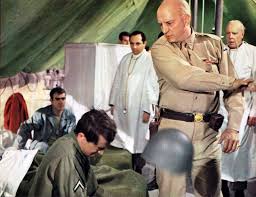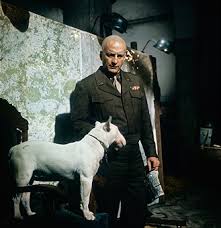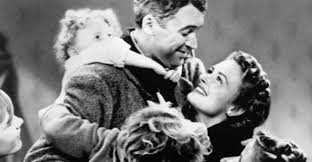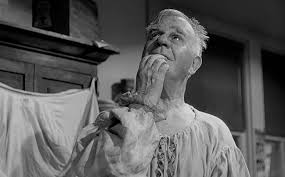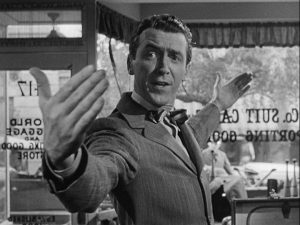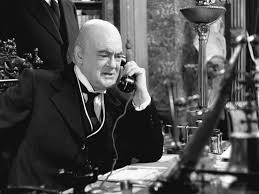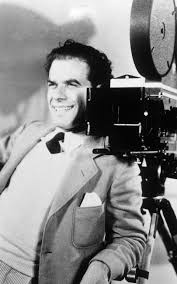Some movies just should not be made —- or should have been made differently. Every now and again I plan to clue you in to movies which I actually liked and were very popular but I think have inherent flaws which make them unwatchable.
BE WARNED – FULL DISCLOSURE: I plan to spoil the living snot out of them for two reasons: given the nature of the evaluation it will usually be necessary to tell the ending – the outcome of the characters often strongly informs the value of the movie. If the bad guys do not get a comeuppance then the movies’ ethical and educational quality should be closely scrutinized. Second, frankly I want to tell you enough about the movie that it kills your curiosity and makes you not want to see it.
Three this time: Grease, Pretty Woman and Risky Business. I have seen and liked all three; all three are classics in a way, were extremely popular in their time, and, in retrospect I realized they were just not very nice movies.
Risky Business: All that being said, there IS ONE scene that is pretty terrific which is fine to show anyone. If you have grown up seeing Tom Cruise in Minority Report, Live-Die-Repeat, or one of the Mission Impossible movies it is hard to resist watching one of the early scenes in Risky Business. He is just a puppy at this time and plays a high school senior who is tasked with watching the family home while his parents are on vacation. Being left completely alone for the first time he sliiiiiiiides into view with a faux microphone wearing nothing but socks, underwear and a long shirt lipsyncing to Bob Seger’s “Old Time Rock and Roll”. It is SO darned cute…….. But then, during the course of the rest of the movie, he: hires a hooker, allows her to manipulate him into so much debt she convinces him to put his rich Ivy league friends together with her friends, effectively turns his family’s home into a bordello, bribes a college evaluator with a questionably aged prostitute, lies to his parents and…..GETS AWAY WITH IT! He is accepted to his dream college and keeps the hooker as a girlfriend. Charming example of how to get ahead.
Pretty Woman: Edward (Richard Gere) hires a hooker (a lot of that going on) named Vivian, played by Julia Roberts, as eye candy for an important negotiation. To make her a convincingly appropriate escort he styles her up. The scenes that follow deliberately echo My Fair Lady, including a posh scene at a racetrack. But the analogy becomes offensive to me for a number of reasons. For one thing, in My Fair Lady, Eliza is virtuous. Instead of the easy cash she could make as a comely lady of the night she scrapes out an honest living selling flowers, then seeks to better herself with elocution and social lessons. Henry’s interest in Eliza ranges from that of a scientist analyzing an interesting form of fungus to paternalistic/fraternalistic protector. In Pretty Woman Edward takes full advantage to use Vivian for that which he has paid her. As for the supporting cast, instead of a Freddie who becomes infatuated with Eliza, there is Philip, a loathsome colleague of Edward’s, who beats and tries to rape Vivian. Now, just before credits, Edward does propose marriage, but it’s a band aid on a gun shot wound. Sadly, I could have accepted pretty (if you’ll excuse the pun) much almost all the rest of the movie if Edward had simply not had sex with her. Duh. If he had rebuffed her attempts to “fulfill” her part of the bargain, if he had done the Higgins’ thing and held her at arm’s length, if Edward had simply been a VIRTUOUS EXAMPLE, there could have even been some rather funny moments from this scenario. Instead Edward is a cad. It is unfortunate, because there ARE some nice moments in this movie, and it had potential. There’s even a very cute scene (which IS watchable but in the middle of the movie) where Edward takes Vivian to a VERY elegant clothing shop. Edward pulls the manager aside and tells him, referring to Vivian, that Edward wants the manager to do some “serious sucking up,” intending to bolster Vivian’s self-ego. The manager misunderstands and immediately goes into this oozing complimentary patter to Edward. Edward stops him in mid sentence: “Not ME! Her!” It is quite funny. Also Hector Elizondo’s portrayal of Barney, the hotel manager/Pickering-type character is stand-out charming because HE treats Vivian as a LADY. Barney would have been a far better Higgins to Vivian’s Eliza. Had that latter pairing been made it might have been a really good story. As it is, it is a preposterously unrealistic portrait of a (definitely NOT) lady.
Grease: Wow, the archetype story of corruption. Olivia Newton-John plays Sandy, a clean cut virgin girl from Australia who had met Danny, (John Travolta), the high school BMOC, the previous summer in an exchange program for high school students. Thrown back together in an American high school, Danny at first doesn’t want to admit he likes her and in true ’50’s fashion they sing and dance their way through boy loses girl, boy eventually gets girl humor trials and tribulations. For those who have grown up first seeing Travolta play tough guys and psychos in movies like Broken Arrow, Face Off, and Pulp Fiction it must be a bit of an amusing shock to see him in a goofy good guy roll and discover the boy can both sing and dance! However, during the course of the movie, some obviously over-aged supposed teenaged girls smoke, sleep and drink their way around Sandy, eventually convincing her that the way to win Danny back is to act like them. (“Good-bye Sandra Dee”) So, to make a long story short, at the end of the movie, Danny admits he loves Sandy and even agrees to go to college, which is fine. But Sandy, as her part of the bargain, becomes a stiletto wearing, Cat Woman leather-outfitted, drinking, smoking party girl. WHAT!? Where’s the cute girl who should have been the good example for the rest of the movie’s layabouts, slackers, and promiscuously behaved degenerates? Danny falls in love with Maria from Sound of Music but takes home Fergie to meet his mom??!! Somehow I think they got that one backwards. Also keep in mind that Danny does not marry the girl but drives off with her. Had they saved the “Better Shape Up” song – costume and everything – for a post-wedding – on the way to the honeymoon scene – where they maybe show Sandy as now ready to let her hair down for her husband, I could have accepted the routine. But as it is – it was hollow and depraved. I remember seeing a Mad Magazine spoof on this movie which pointed out this exact perversity: So to win your guy, you should become a slut?? Even Mad Magazine saw the ludicrous fallacy in that argument. It’s certainly not a good example to set for your children.
Of the three I found Grease the most offensive. Risky Business pushed a questionably ethiced young man over the brink. Pretty Woman lionized prostitution, making it appear a path to success and happiness with your dream man. But Grease encouraged the deliberate corruption of a nice young woman.
Similarly to the point I made about being careful to screen what you encourage others to watch and not rely on the reputation or past history of the filmmakers, just because a movie is considered a “classic” does not make it wholesome.
6-13-15







